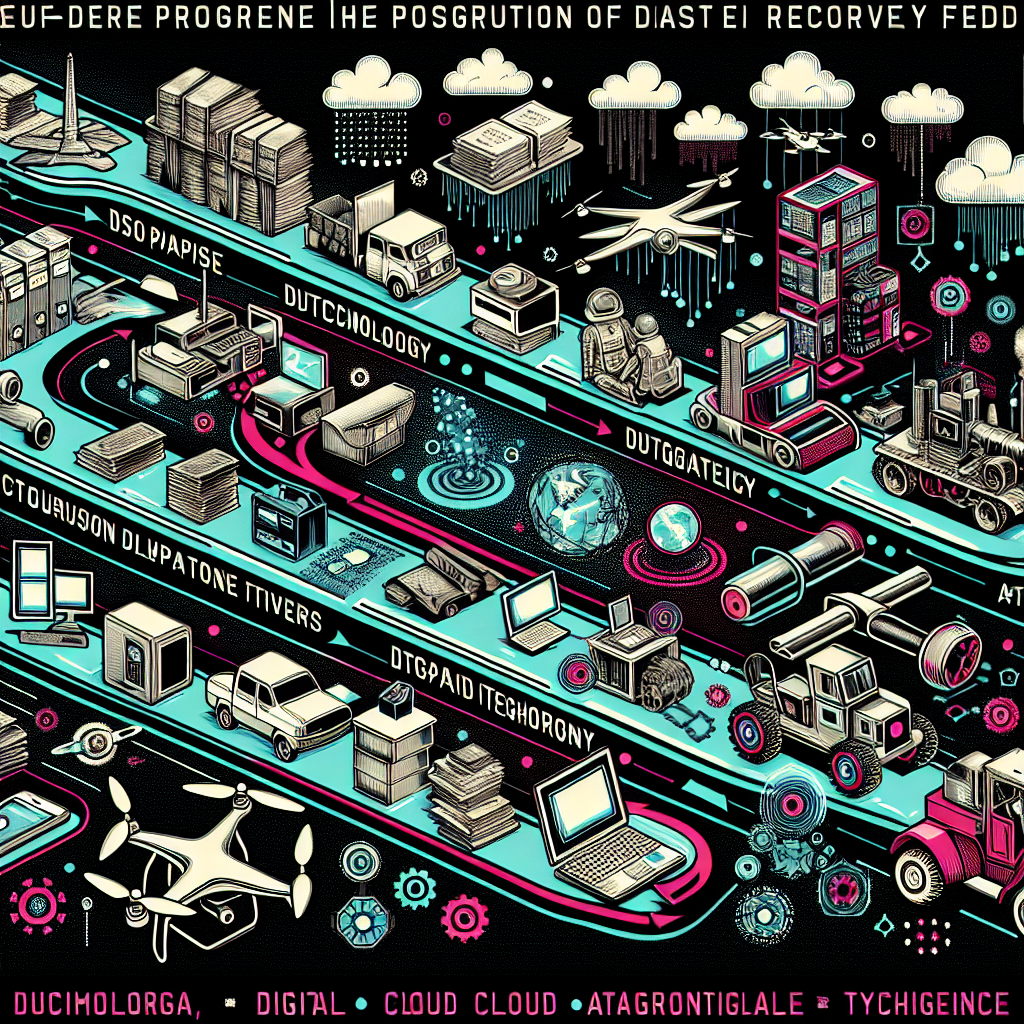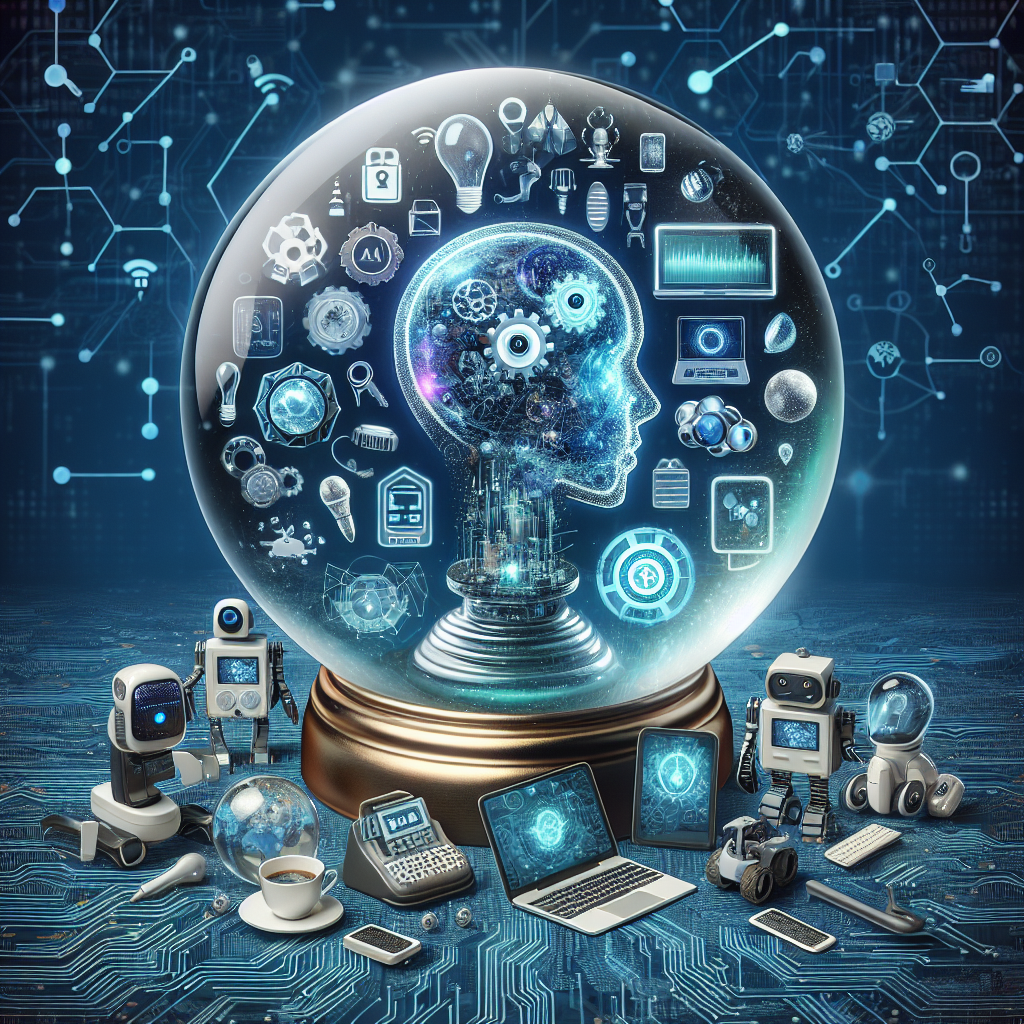Your cart is currently empty!
Tag: Innovations

The Future of Service Level Agreements: Trends and Innovations.
Service Level Agreements (SLAs) have long been a cornerstone of the relationship between service providers and their clients. These formal agreements outline the level of service that can be expected, including metrics such as response times, uptime guarantees, and resolution times.However, as technology continues to evolve at a rapid pace, the future of SLAs is also changing. In the past, SLAs were often seen as static documents that were negotiated at the beginning of a contract and then rarely revisited. But as businesses become increasingly reliant on technology to deliver their services, the need for more dynamic and flexible SLAs is becoming apparent.
One trend that is emerging in the world of SLAs is the use of automated monitoring and reporting tools. These tools allow service providers to track key performance indicators in real-time, providing both parties with up-to-date information on the level of service being delivered. This not only ensures greater transparency but also allows for more proactive management of service levels.
Another trend is the use of artificial intelligence and machine learning to predict and prevent service disruptions before they occur. By analyzing historical data and patterns, AI can identify potential issues and take corrective action before they impact service levels. This proactive approach can help to minimize downtime and ensure a more consistent level of service.
Innovations in cloud computing are also driving changes in SLAs. With more and more businesses moving their services to the cloud, the traditional model of SLAs based on physical infrastructure is becoming outdated. Instead, SLAs are now focusing on the performance and availability of cloud services, as well as the security and compliance of data stored in the cloud.
One of the key challenges facing the future of SLAs is the increasing complexity of technology ecosystems. With the rise of hybrid and multi-cloud environments, as well as the proliferation of connected devices and IoT, service providers are being asked to deliver services across a more diverse and interconnected landscape. This requires a more holistic approach to SLAs, taking into account not just individual components but the entire ecosystem in which services operate.
Overall, the future of SLAs is one of greater agility, transparency, and proactivity. By leveraging new technologies and approaches, service providers can deliver more reliable and responsive services, while clients can have greater confidence in the level of service they are receiving. As businesses continue to rely on technology to drive their operations, the importance of SLAs as a tool for managing and measuring service levels will only continue to grow.

The Evolution of Disaster Recovery: Trends and Innovations in the Field
Disaster recovery has always been an essential aspect of business continuity planning. As technology continues to advance, the field of disaster recovery has also evolved to keep pace with the changing landscape of potential threats and risks. In recent years, there have been several trends and innovations that have transformed the way organizations approach disaster recovery.One of the most significant trends in disaster recovery is the shift towards cloud-based solutions. Cloud computing offers a cost-effective and scalable way to store and backup data, making it an attractive option for organizations looking to enhance their disaster recovery capabilities. By leveraging the cloud, businesses can ensure that their critical data is always accessible and secure, even in the event of a disaster.
Another key trend in disaster recovery is the adoption of virtualization technology. Virtualization allows organizations to create virtual copies of their servers and applications, making it easier to recover data and systems in the event of a disaster. Virtualization also enables businesses to test their disaster recovery plans more effectively, ensuring that they are prepared for any potential scenario.
In addition to these trends, there have been several innovations in the field of disaster recovery that are reshaping the way organizations approach resilience planning. One such innovation is the use of artificial intelligence and machine learning to improve disaster recovery processes. These technologies can help organizations identify potential threats and vulnerabilities, automate recovery processes, and analyze data to improve overall resilience.
Another innovation in disaster recovery is the use of data analytics to improve decision-making and response times during a disaster. By analyzing historical data and trends, organizations can better predict potential risks and develop more effective recovery strategies. Data analytics can also help organizations identify areas for improvement in their disaster recovery plans, ensuring that they are always prepared for any eventuality.
As the field of disaster recovery continues to evolve, it is essential for organizations to stay ahead of the curve and embrace these trends and innovations. By leveraging cloud-based solutions, virtualization technology, artificial intelligence, and data analytics, businesses can enhance their resilience and ensure that they are prepared for any disaster that may come their way. The evolution of disaster recovery is an ongoing process, and organizations that adapt and innovate will be better equipped to navigate the challenges of an increasingly complex and unpredictable world.

The Future of Managed Service Providers: Trends and Innovations to Watch Out For
Managed Service Providers (MSPs) play a crucial role in helping businesses maintain and optimize their IT infrastructure. As technology continues to evolve at a rapid pace, MSPs are also evolving to meet the changing needs of their clients. In this article, we will explore the future of MSPs and the trends and innovations to watch out for in the coming years.One of the key trends that MSPs are embracing is the shift towards proactive IT management. In the past, MSPs primarily focused on reactive support, fixing issues as they arose. However, with the increasing complexity of IT systems and the growing importance of technology to businesses, MSPs are now moving towards a proactive approach to IT management. This involves monitoring systems in real-time, predicting and preventing issues before they occur, and continuously optimizing IT performance.
Another trend that is shaping the future of MSPs is the adoption of artificial intelligence (AI) and machine learning. These technologies are revolutionizing the way MSPs deliver services by enabling them to automate routine tasks, analyze vast amounts of data, and make data-driven decisions. AI and machine learning are being used to enhance security, improve system performance, and optimize resource allocation, ultimately leading to a more efficient and effective IT management process.
Cloud computing is also playing a significant role in the evolution of MSPs. With the increasing adoption of cloud services by businesses, MSPs are expanding their offerings to include cloud management and migration services. This allows businesses to leverage the scalability, flexibility, and cost savings of cloud computing while offloading the management and maintenance of their cloud infrastructure to MSPs.
In addition to these trends, MSPs are also exploring new technologies such as Internet of Things (IoT), edge computing, and blockchain. These technologies offer new opportunities for MSPs to provide innovative solutions to their clients, such as IoT device management, edge computing optimization, and blockchain-based security services.
Overall, the future of MSPs is bright, with continued growth and innovation on the horizon. By embracing proactive IT management, adopting AI and machine learning, expanding into cloud services, and exploring new technologies, MSPs are well-positioned to meet the evolving needs of businesses in the digital age. Businesses looking to stay ahead of the curve should keep an eye on these trends and innovations in the coming years.

Exploring the Future of Cloud Computing: Trends and Innovations
Cloud computing has revolutionized the way businesses store, manage, and access their data. With the increasing demand for more efficient and flexible IT solutions, the future of cloud computing looks promising with new trends and innovations emerging to meet the evolving needs of businesses.One of the key trends in cloud computing is the move towards hybrid cloud solutions. Hybrid cloud combines the benefits of both public and private cloud environments, allowing businesses to leverage the scalability and cost-effectiveness of public clouds while maintaining the security and control of private clouds. This hybrid approach is becoming increasingly popular as businesses seek to optimize their IT infrastructure and workload management.
Another trend in cloud computing is the rise of edge computing. Edge computing involves processing data closer to where it is generated, rather than relying on centralized data centers. This approach reduces latency and improves performance for applications that require real-time processing, such as IoT devices and autonomous vehicles. By distributing computing resources closer to the edge of the network, businesses can improve efficiency and deliver faster, more responsive services to their customers.
Innovations in cloud computing are also driving the future of the industry. One of the most exciting developments is the adoption of artificial intelligence and machine learning in cloud services. These technologies enable businesses to automate processes, analyze vast amounts of data, and make data-driven decisions in real-time. By integrating AI and machine learning into cloud platforms, businesses can unlock new insights, improve efficiency, and drive innovation.
Another innovation shaping the future of cloud computing is the rise of serverless computing. Serverless computing eliminates the need for businesses to manage servers and infrastructure, allowing them to focus on developing and deploying applications. By abstracting away the underlying infrastructure, serverless computing simplifies development processes, reduces costs, and improves scalability. This approach is particularly beneficial for businesses looking to accelerate their digital transformation and innovate at a faster pace.
As the demand for cloud computing continues to grow, businesses can expect to see further advancements in areas such as cloud security, multi-cloud management, and containerization. These trends and innovations will help businesses stay competitive, improve operational efficiency, and drive growth in the digital economy.
In conclusion, the future of cloud computing is bright, with new trends and innovations shaping the industry and enabling businesses to unlock new opportunities. By embracing hybrid cloud solutions, edge computing, AI and machine learning, serverless computing, and other advancements, businesses can harness the power of cloud computing to drive innovation, improve efficiency, and stay ahead of the competition.

The Future of IT Infrastructure Management: Innovations and Opportunities
The future of IT infrastructure management is rapidly evolving, with new innovations and opportunities emerging to help organizations better manage and optimize their IT systems. As technology continues to advance, the need for efficient and effective infrastructure management has become increasingly important for businesses of all sizes.One of the key innovations driving the future of IT infrastructure management is the rise of cloud computing. Cloud technology allows organizations to access and store data and applications over the internet, rather than on physical servers. This not only reduces the need for on-premise hardware and maintenance but also enables greater flexibility and scalability for businesses to quickly adapt to changing needs.
Another important trend in IT infrastructure management is the adoption of artificial intelligence (AI) and machine learning. These technologies can help organizations automate routine tasks and processes, improve decision-making, and predict and prevent potential issues before they occur. By leveraging AI and machine learning, businesses can streamline operations, reduce downtime, and enhance overall performance.
Additionally, the Internet of Things (IoT) is playing a significant role in reshaping IT infrastructure management. IoT devices, such as sensors and smart devices, are generating massive amounts of data that organizations can use to gain insights into their operations and make more informed decisions. By integrating IoT with IT infrastructure management systems, businesses can monitor and manage their assets in real-time, optimize performance, and improve efficiency.
As organizations continue to embrace digital transformation, the demand for skilled IT professionals who can effectively manage and optimize IT infrastructure will only increase. This presents a wealth of opportunities for IT professionals to specialize in areas such as cloud computing, AI, and IoT, and help businesses navigate the complexities of managing modern IT systems.
In conclusion, the future of IT infrastructure management is full of exciting innovations and opportunities for organizations to improve efficiency, agility, and performance. By embracing technologies such as cloud computing, AI, and IoT, businesses can stay ahead of the curve and drive success in the digital age. With the right strategies and expertise, organizations can unlock the full potential of their IT infrastructure and thrive in a rapidly changing technological landscape.

The Future of Technical Support: Trends and Innovations to Watch Out For
As technology continues to evolve at a rapid pace, so too does the world of technical support. Gone are the days of waiting on hold for hours to speak to a representative or having to bring your device into a physical store for repairs. The future of technical support is all about convenience, efficiency, and innovation.One of the most significant trends in technical support is the rise of artificial intelligence (AI) and machine learning. These technologies are revolutionizing the way technical issues are diagnosed and resolved. AI-powered chatbots can now provide instant and personalized assistance to customers, answering common questions and guiding them through troubleshooting steps. Machine learning algorithms can also analyze vast amounts of data to predict and prevent future technical issues before they even occur.
Another trend to watch out for is the increasing use of remote support tools. With more people working remotely than ever before, the need for remote technical support has never been greater. Remote support tools allow technicians to access and troubleshoot devices from anywhere in the world, saving time and reducing the need for in-person or over-the-phone support.
Furthermore, the Internet of Things (IoT) is shaping the future of technical support. As more and more devices become connected to the internet, the potential for technical issues to arise increases. Technical support teams are now tasked with troubleshooting not just computers and smartphones, but also smart home devices, wearables, and even cars. This requires a deeper understanding of interconnected systems and the ability to provide support across a wide range of devices and platforms.
Finally, the future of technical support is all about personalization and proactive support. Companies are using data analytics and customer feedback to tailor support experiences to individual needs and preferences. This means that customers can receive personalized recommendations, proactive alerts about potential issues, and even on-demand support tailored to their specific needs.
In conclusion, the future of technical support is an exciting and rapidly evolving field. With the rise of AI, remote support tools, IoT, and personalized support experiences, the way we receive technical assistance is changing for the better. By keeping an eye on these trends and innovations, businesses can stay ahead of the curve and provide the best possible support experience for their customers.

The Future of Cloud Computing: Emerging Technologies and Innovations
Cloud computing has been a game-changer in the world of technology, enabling businesses to store, manage, and access data and applications over the internet rather than on physical servers. As technology continues to advance at a rapid pace, the future of cloud computing is poised to bring even more innovations and capabilities to the table.One of the emerging technologies that is set to revolutionize cloud computing is edge computing. Edge computing brings processing power closer to the devices that are generating data, reducing latency and increasing efficiency. This technology will allow for faster and more real-time data processing, making it ideal for applications such as autonomous vehicles, smart cities, and IoT devices.
Another exciting development in cloud computing is the rise of serverless computing. Serverless computing allows developers to run code without having to manage servers, allowing them to focus on writing and deploying code rather than worrying about infrastructure. This technology offers a more efficient and cost-effective way to run applications, as users only pay for the resources they use.
Artificial intelligence and machine learning are also set to play a significant role in the future of cloud computing. These technologies can analyze vast amounts of data to provide insights and predictions, enabling businesses to make more informed decisions. Cloud providers are increasingly integrating AI and machine learning capabilities into their platforms, making it easier for users to leverage these technologies.
Security is always a top concern when it comes to cloud computing, and new innovations are being developed to address these concerns. One such innovation is confidential computing, which allows data to be processed in a secure enclave, protecting it from unauthorized access. This technology ensures that sensitive information remains confidential, even when it is being processed in the cloud.
With these emerging technologies and innovations, the future of cloud computing is looking brighter than ever. Businesses will be able to take advantage of faster processing speeds, more efficient resource management, and enhanced security measures to drive innovation and growth. As technology continues to evolve, the possibilities for cloud computing are endless, and the potential for businesses to leverage these advancements is limitless.

The Future of Service Level Agreements: Trends and Innovations in SLA Management
Service Level Agreements (SLAs) have long been a staple in the world of business, providing a formal agreement between a service provider and a customer on the level of service that will be provided. However, as technology continues to evolve and customer expectations shift, the future of SLAs is also changing. In this article, we will explore some of the trends and innovations in SLA management that are shaping the future of service agreements.One of the key trends in SLA management is the shift towards more dynamic and flexible agreements. Traditional SLAs often involve fixed terms and metrics that may not always be relevant or reflective of the actual service being provided. In response to this, many organizations are moving towards more agile SLAs that can be adjusted in real-time based on changing customer needs and service capabilities. This allows for a more responsive and customer-centric approach to service delivery, ensuring that SLAs remain relevant and effective.
Another trend in SLA management is the increasing use of automation and artificial intelligence (AI) to streamline the monitoring and management of service agreements. AI-powered tools can analyze large amounts of data in real-time, flagging potential issues or deviations from SLA requirements before they become major problems. This proactive approach to SLA management can help to prevent service disruptions and improve overall service quality, leading to higher customer satisfaction and retention.
Additionally, there is a growing focus on outcome-based SLAs, where the emphasis is on the end result or value delivered to the customer, rather than simply meeting predefined service metrics. This shift towards outcome-based SLAs aligns more closely with the business goals of both the service provider and the customer, ensuring that SLAs are truly driving value and contributing to business success.
Innovations in SLA management are also being driven by the increasing complexity and interconnectedness of modern IT environments. As organizations adopt cloud services, IoT devices, and other emerging technologies, the traditional one-size-fits-all approach to SLAs is no longer sufficient. Instead, organizations are looking for more flexible and customizable SLA models that can accommodate the unique requirements of their specific technology stack and service ecosystem.
Overall, the future of service level agreements is evolving to meet the changing needs of businesses and customers in the digital age. By embracing dynamic, AI-driven, and outcome-based SLAs, organizations can ensure that their service agreements remain relevant, effective, and value-driven in an increasingly complex and competitive business environment.

Beyond the Basics: Innovations in Business Continuity Planning for the Modern Era
In today’s fast-paced and ever-changing business environment, having a solid business continuity plan is essential for any organization. While the basics of business continuity planning are well-known and widely practiced, the modern era calls for new and innovative approaches to ensure that companies can effectively respond to and recover from disruptions.One of the key innovations in business continuity planning for the modern era is the use of technology. With the advancement of technology, companies now have access to a wide range of tools and resources that can help them better prepare for and respond to disruptions. For example, cloud-based backup and recovery solutions can provide businesses with the ability to quickly and easily recover their data in the event of a disaster. Similarly, artificial intelligence and machine learning can be used to predict and prevent potential disruptions before they occur, giving companies a proactive approach to business continuity planning.
Another innovation in business continuity planning is the focus on resilience and adaptability. In today’s rapidly changing business landscape, companies need to be able to quickly adapt to new challenges and disruptions. This means that business continuity plans need to be flexible and dynamic, allowing companies to adjust their strategies in real-time to respond to changing circumstances. By building resilience into their business continuity plans, companies can ensure that they are able to weather any storm and emerge stronger on the other side.
Additionally, the modern era calls for a more holistic approach to business continuity planning. While traditional business continuity plans often focus solely on IT systems and data recovery, companies now need to consider the broader impacts of disruptions on their entire organization. This means taking into account the human element of business continuity planning, such as employee well-being and communication strategies, as well as the financial and operational aspects of the business.
Overall, the modern era presents new challenges and opportunities for business continuity planning. By embracing innovative approaches and technologies, companies can ensure that they are well-prepared to respond to and recover from disruptions, no matter how unpredictable they may be. Beyond the basics lies a world of possibilities for businesses looking to stay ahead of the curve and thrive in an increasingly volatile and uncertain business environment.

The Future of Managed Service Providers: Trends and Innovations
Managed Service Providers (MSPs) have become an essential part of the IT industry, providing businesses with a wide range of services to help them manage their technology needs. As technology continues to evolve at a rapid pace, the role of MSPs is also changing, with new trends and innovations shaping the future of the industry.One of the key trends that is driving the future of MSPs is the shift towards cloud-based services. With businesses increasingly moving their operations to the cloud, MSPs are playing a crucial role in helping them migrate and manage their cloud infrastructure. This trend is expected to continue to grow in the coming years, as more and more businesses realize the benefits of cloud computing and seek out MSPs to help them navigate this complex landscape.
Another important trend in the MSP industry is the increasing focus on cybersecurity. With the rise of cyber threats and data breaches, businesses are placing a greater emphasis on securing their networks and data. MSPs are stepping up to meet this demand by offering a range of cybersecurity services, such as threat detection, vulnerability assessments, and incident response. As cybersecurity threats continue to evolve, MSPs will need to stay ahead of the curve and invest in cutting-edge technologies to protect their clients’ data.
In addition to cloud services and cybersecurity, MSPs are also exploring new innovations such as artificial intelligence (AI) and automation. AI technology has the potential to revolutionize the way MSPs deliver services, by automating routine tasks and providing valuable insights into network performance and security. By harnessing the power of AI, MSPs can improve efficiency, reduce costs, and deliver a higher level of service to their clients.
As the MSP industry continues to evolve, it is clear that innovation will play a key role in shaping its future. MSPs that embrace new technologies and trends, such as cloud computing, cybersecurity, and AI, will be well-positioned to meet the changing needs of their clients and stay ahead of the competition. By staying ahead of the curve and investing in the latest innovations, MSPs can continue to provide valuable services to businesses and help them navigate the increasingly complex world of technology.
